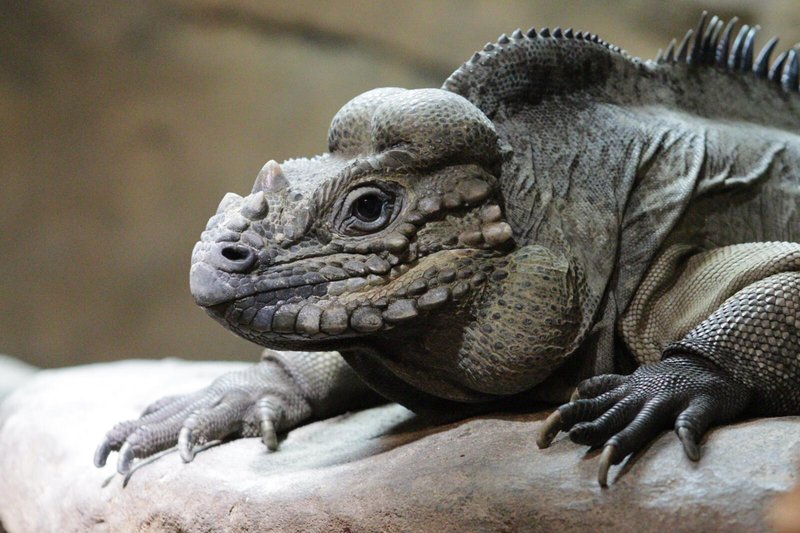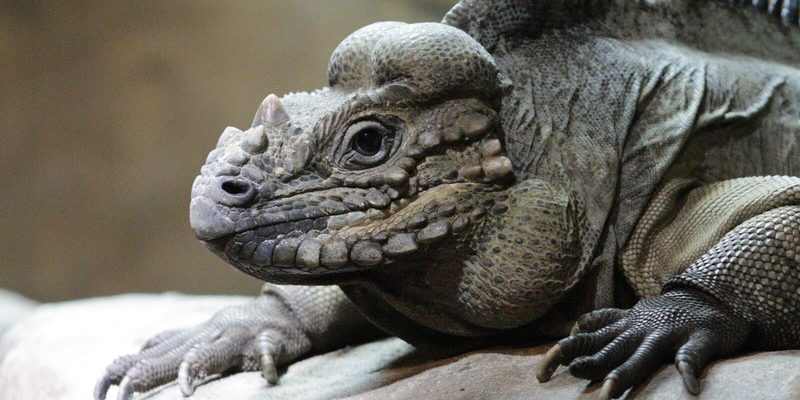
Rhino iguanas, specifically the Cyclura cornuta species, can adapt to both indoor and outdoor environments, but the choice depends on a few factors—like climate, space, and your ability to meet their needs. Think of it this way: just like every plant has its preferred conditions for growth, rhino iguanas thrive best when their habitat is tailored to their unique requirements. In this guide, we’ll explore whether these captivating creatures are better off as indoor companions or outdoor residents.
Understanding Rhino Iguanas’ Natural Habitat
To decide where a rhino iguana will thrive, it’s essential to understand their natural environment. Rhino iguanas come from the warm, sunny islands of the Caribbean. They love basking in the sun, climbing on rocks, and foraging for food among the vegetation. Given these conditions, it’s no surprise that their habitat impacts their overall health and well-being.
In the wild, these iguanas typically thrive in sunny, dry areas with plenty of access to food and shelter. They’re also used to fluctuating temperatures, often soaking up warmth during the day and cooling off at night. So when thinking about their habitat, you’ll want to mimic these outdoor conditions as closely as possible, whether you’re keeping them indoors or outdoors.
Indoor Living for Rhino Iguanas
Keeping a rhino iguana indoors can be rewarding, especially if done right. If you live in a colder climate or simply prefer to have your pet indoors, you’ll need to create an environment that meets their needs. Here’s what to consider:
1. Space and Setup: Rhino iguanas require a large enclosure, ideally at least 4 feet long. This space should have elements like branches for climbing, a basking area under a heat lamp, and a cool area to retreat to. Think of it as creating a mini rain forest with climbing opportunities!
2. Temperature Control: Maintaining a proper temperature gradient in the enclosure is crucial. Aim for a basking spot of about 100°F and a cooler area around 75°F. Use heat lamps and thermometers to keep an eye on conditions. If you’ve ever felt like Goldilocks searching for just the right temperature, that’s what your iguana needs too!
3. Diet and Hydration: An indoor iguana should have a diet rich in leafy greens and vegetables, and they also need access to fresh water. Set up a shallow dish for water to ensure they stay hydrated, just like you’d keep a plant properly watered.
Outdoor Living for Rhino Iguanas
Now, let’s talk about the outdoor option. If you live in a warm climate where it’s safe to let your rhino iguana roam, an outdoor habitat can be a fantastic choice. Just think about the natural sunbathing and foraging they’d enjoy! However, there are some important details to keep in mind.
1. Secure Enclosure: If you’re thinking of an outdoor setup, it must be secure. These iguanas are excellent climbers and diggers. A sturdy fence that goes at least a foot underground will help keep them safe from escape and predators. It’s like building a fortress, but for your iguana!
2. Shade and Shelter: While they love the sun, too much can be harmful. Make sure there are shady spots and places where they can hide from harsh weather. Think of it like creating a little paradise, where they can enjoy both the sun and shade.
3. Monitoring Wildlife: If your rhino iguana is outdoors, keep an eye on potential threats like birds of prey or stray animals. It’s essential to be vigilant, just as a gardener would protect their garden from pests.
Comparing Indoor vs. Outdoor Living
So, how do indoor and outdoor living stack up against each other? Both options have their perks, but your choice depends on your lifestyle and environment.
– Indoor Living:
– Pros: More control over temperature, humidity, and safety from predators. Easier to manage their diet and general care.
– Cons: Less space for natural behavior and climbing. You might have to invest in a larger enclosure and heat sources.
– Outdoor Living:
– Pros: Natural sun exposure, space to roam, and the chance to explore. This can lead to happier, healthier iguanas.
– Cons: Requires more upkeep to ensure safety from predators and elements. Weather can be a significant factor, especially in colder climates.
You might need to weigh these factors against your ability to provide the best care possible. After all, you want your iguana to thrive, right?
Common Concerns for Indoor and Outdoor Iguanas
No matter where your rhino iguana resides, there are always concerns to keep in mind. Let’s tackle a few common issues that can arise.
1. Temperature Fluctuations: For indoor iguanas, it’s crucial to prevent temperature swings that can cause stress. For outdoor iguanas, sudden cold snaps can be dangerous. Having a backup source for heat or shelter is key.
2. Health Monitoring: Look out for signs of illness in both indoor and outdoor settings. Changes in appetite, lethargy, or abnormal droppings should prompt a visit to the vet. Always play detective when it comes to your pet’s health.
3. Social Interaction: Indoor iguanas often bond more with their owners, while outdoor iguanas might be more independent. If you want a pet that engages with you, consider how much interaction your iguana will get based on its living situation.
Final Thoughts on Rhino Iguanas’ Living Conditions
Deciding whether a rhino iguana can live indoors or outdoors is a serious consideration that depends on your unique situation. Both options offer a chance for these remarkable reptiles to thrive, but they come with different responsibilities and challenges. The key is to mimic their natural habitat as closely as possible, ensuring they have access to warmth, space, and proper nutrition.
Ultimately, whether you choose indoor or outdoor living, your commitment to providing a loving and supportive home will lead to a happy, healthy rhino iguana. So fire up that passion, create the perfect space, and enjoy the joy of having these incredible creatures in your life!

